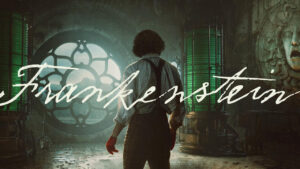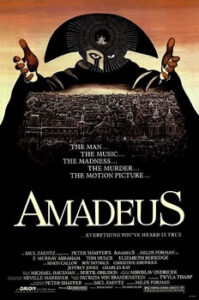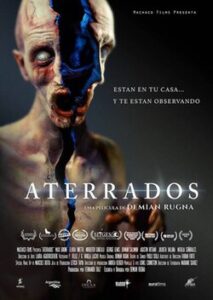.
There was no way I was missing my shot at seeing Guillermo del Toro’s Frankenstein on the big screen, even if it wasn’t showing at an AMC theater and therefore I couldn’t use my subscription benefit.

Netflix
Frankenstein by Mary Shelley has been directly or indirectly adapted countless times and has been a staple of the silver screen for over a hundred years. (There is a silent version made by Edison, so it’s at the very start of movies.) I do not think any adaptation has retained every element of Shelley’s sprawling novel, with most productions picking and choosing the parts and themes that they most want to enhance and explore. Universal in their classic film played to the God vs. Man themes while Hammer focused on the evils of a scientist obsessed with his own pursuits.
With del Toro I went in with a fairly strong set of expectations based on the director’s body of work. This production would emphasize the creation’s humanity, shower it with sympathy, and tread on the ground questioning who is the tale’s real monster.
I was not wrong.
Frankenstein (2025) is a luscious feast for the eyes in its production. Nearly every new scene or sequence not only presents production design that dazzles and captivates and also brings in numerous beloved actors. The script, for the most part, dodges the deadly dull trap of overexplaining Victor Frankenstein’s obsession and its origins, but neither does it skate past them unmentioned.
Oscar Isaac turns in a wonderfully calculated performance which echoes without repeating the traits he employed for Ex Machina. (Another story clearly derived from Shelley’s original novel.) Jacob Elordi is sublime in his performance as the creation, certainly capturing the initial innocent, childlike nature that del Toro wanted and managing the transformation to enraged, implacable beast quite handsomely. If there is a weakness in the cast, and I realize the horror community will violently disagree with me on this point, it is Mia Goth as Elizabeth. I never believed that Elizabeth lived and breathed as a character but rather seemed to exist as a collection of traits and phrases meant to impel others along their courses. I have witnessed Goth’s performance in other projects and even when I detested the movies, I found her quite good in them. I suspect the challenges of both an accent and pseudo-period dialog sapped too much of her energy. There is a school of thought in film production that accents can get between an actor and their performance. On the other hand, I found Chistoph Waltz’s Harlander, Victor’s financier and research associate, thoroughly engrossing with more than a hint of The Bride of Frankenstein‘s Doctor Pretorious.
del Toro clearly is a fan of numerous previous productions of this tale and throughout the film makes sly references to them. I appreciate that the references are subtle enough that for the casual viewer they will pass by unnoticed. There is not ‘look at this’ in the cinematography letting you know that the decrepit mill set mirrors the windmill from Universal’s production nor when the creation is shot in the face is there a cue highlighting that this came from the Hammer films.
There are elements eliminated entirely from Shelley’s text. William is no longer a child of six or seven to be murdered by the creation as a revenge plot but is now an adult and is complicit in Victor’s crimes against nature. Elizabeth’s close, though not by blood, relation has been eliminated so any romance between her and Victor no longer carries the aroma of incest.
This is a lovely film, and I thoroughly enjoyed it. It needs to be seen in a theater if you can swing it, but at the very least on Netflix next month. Should it come to an AMC in the next couple of weeks I may venture forth for a second in-theater viewing.
However, I wonder if anyone is ever going to do a production that depicts the creation as the monster it is in the text. A vain, narcissistic incel that believes its own pain and agony justifies murderous rage upon innocent victims.






